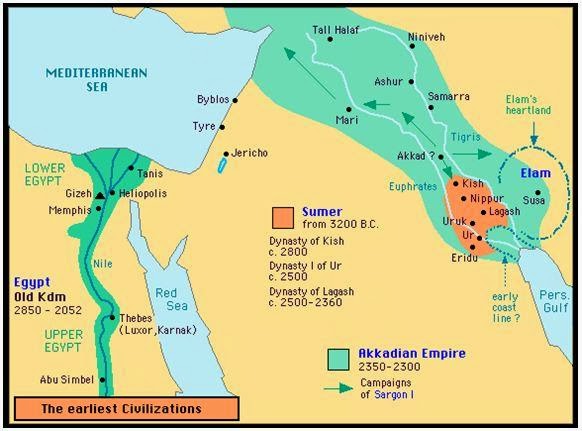Ancient Egypt is a civilization
that passed through different periods. Each of these periods had a relatively
distinct political and social structure. However, due to the relative
similarities between Early Dynastic and Old Kingdom periods and their
significance in developing Egyptian History, the period of the third millennium
BC of the Egyptian civilization will be discussed in this paper. To ensure
authority and control over their state, rulers create social and political
boundaries that are designated to standardize their society and make them
easier to manage. Part of facilitating the management of their state is
creating sub-authorities that can be viewed as an intermediary institution
between the ruler and the commoners.
The first tool in reducing a
complex society to a manageable one is to develop a common identity. This
common identity includes the emergence of an ethnic common ground that’s
associated with pride and traditions such as festivals, rituals and royal
ceremonies. For example, they provided prehistorical narratives of Egyptian
Kings (which possibly never existed). In other words, the Egyptian kings sought
to create a national identity. This identity excludes certain people from
Egyptian society. Moreover, Pharaohs developed the concept of Egyptian
Civility: To be civilized, is to be Egyptian. Pharaohs extended this concept
and applied it to establish their absolute authority. Naturally, to achieve a
civilized society, your state must be in peace and order. To avoid chaos and
obtain order you thus have to seek the loyalty of the Pharaoh who represents
the land and people of Egypt. The pharoses are the protectors of Egypt who are
responsible in maintaining the survival and prosperity of Egypt. The pharos
also used the intermediary periods as learning lessons to the people of Egypt
through which they recognized the disadvantages of competing kingdoms and the
damages of chaotic politics. In those periods of political disunity, famine and
drought broke out through Egyptian land. Using these cases, Egyptian pharos
established their role in maintaining cosmic balance which is symbolized in the
integrity of Egypt and the control of the Nile.
Due to the large extent of Egyptian
land, Pharos developed a complex administrative system and regional authorities
that ensure their control. Those governmental systems would require a large
number of administrators, clerics, and court officials. At this point, the Pharaohs
develop the most distinguished characteristic of Egyptian civilization which is
social stratification. Egyptian society in this period is marked by a
hierarchal system headed by the absolute authority of the Pharaoh. A class of
ruling elites was developed to fill in the different administrative positions.
On top of those Elites is the Vizier who resembles an intermediary between the pharaoh
and the rest of Egypt.
Different Bureaucratic institutions
developed to manage the economy, which is central to every emerging state. The
first step was to develop royal foundations which collect and accumulate
resources from different parts of Egypt and send them to the central
government. Then the central administration redistributes and allocates the
food and goods to different regions. This concept of the “provider state” was
also confirmed in terms of trade. However, controlling trade strengthened the
power of the elites. For instance, not only the accumulation of resources was
now in their hands, but also communication via trade became exclusive to them.
What’s more, the development of the
Egyptian writing system expanded the gap between the commoners and the elites.
The writing system produced a “high exclusive culture” that’s very distinct
from the rest of society. Further, to be in an administrator position meant
literacy and knowledge. Administrators developed records that keep precise
numbers of farms and locations of resources so that they ensure that everyone
is paying tax-money.
One of the most significant visual
mechanisms that the Egyptian kings devised to remind the people of the
centrality of the state, which is represented in the Pharaoh, was the
development of huge monuments, which glorify the Pharaoh. Initially, taxation
money was needed to fund those huge projects. This taxation money gradually
increased corresponding to the need of building bigger monuments. This
processes developed a greater social stratification. The hierarchy of Egyptian society is
analogous to their favorite structures, the pyramids. On top of the pyramid
sits the Pharaoh, and on the bottom the commoners. In the beginning a lesser
social stratification was presented depicted by the step pyramids. Gradually,
greater social stratification developed and with that the Giza Pyramids came to
existence
